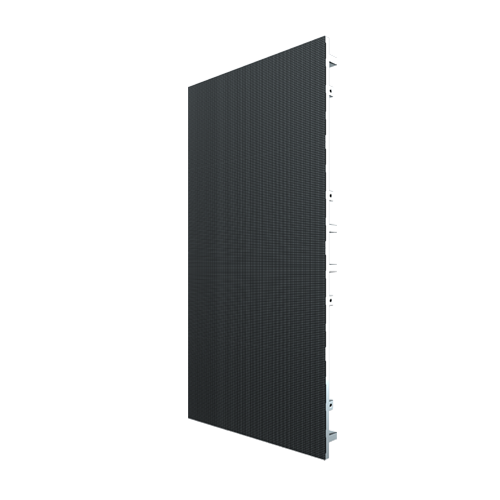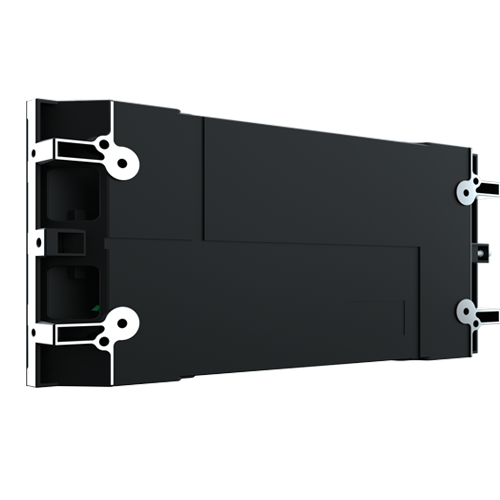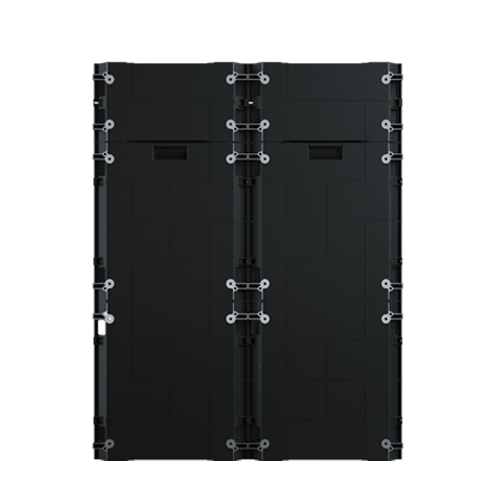

The success of any indoor or outdoor advertising campaign will be affected by the quality of the advertising LED display. Your company’s commercial interests among stakeholders and business partners will also be affected. Accordingly, choosing to advertising LED displays is not a simple walk in the park; instead, it requires a basic understanding of LED pixels and pixel pitch to deliver the best viewing experience to your audience.
To let you understand more about LED display board for advertising, the following is an overview of what LED pixels and pixel pitch are and how to find the right pixel pitch for your display.

What are LED Pixels?
A LED pixel refers to the smallest part of a digital image or display. A digital display consists of a grid of pixels, and each pixel comprises red, blue, and green lighting elements. These elements are used in various combinations of different intensities to produce millions of distinct hues.
What is Pixel Pitch?
Pixel pitch alludes to the density of LED clusters or pixels on a digital display, such as an advertising LED display, and corresponds with the resolution. Typically, it is the distance in millimeters from one LED pixel’s center to the adjacent LED pixel’s center. The LED clusters are attached to circuit boards as well as backplates, called modules. Likewise, these modules are tied together to form LED cabinets referring to consolidated and merged electronics units, which are consistently tiled and stacked to make indoor and outdoor LED walls.
Apart from that, the size of the pixels determines the pixel pitch—the smaller the pixel pitch, the greater the resolution. In simple words, we can say that pixel pitch represents the distance between two pixels; a smaller pixel pitch implies that the distance between pixels is less, translating to increased pixel density and higher screen resolution.

Why is Pixel Pitch Important?
Pixel pitch influences the viewing experience of the audience of your advertising LED display. The higher the pixel pitch of an LED signage display, the further the viewing distance. Similarly, the smaller the pixel pitch, the closer the viewing distance.
Small pixel pitch values allow your display to achieve smooth borders with finer details, and viewers can enjoy a crisp and clear image quality while standing closer to the screen.
It means that the higher pixel density results in better visuals and quality. However, higher density loses its advantage as the viewing distance rises, increasing the display cost. Though reduced pixel pitch gives higher resolution and quality, it becomes expensive due to increased pixels and material and production costs.
How to Find the Right Pixel Pitch for A LED Display?
The following aspects need to be considered to find the right pixel pitch for a LED display:
Indoor or Outdoor
Above all else, there is a need to know whether the LED display will be indoor or outdoor. Indoor may include retail stores and the like, while outdoor may consist of roads, stadiums, etc. Compared with indoor LED displays,outdoor LED displays have higher requirements for tolerating different harsh environments and temperatures. In addition, outdoor LED displays and indoor LED displays have different requirements for pixel pitch. Indoors generally require a small pixel pitch; outdoors generally require a large pixel pitch.

Minimum Viewing Distance
As mentioned earlier, the lower pixel pitch is optimal for closer viewing, whereas a higher pixel pitch is optimal for viewing from afar as it lengthens the minimum viewing distance. Subsequently, the optimal pixel pitch for advertising LED displays depends on the minimum viewing distance, the point where picture fidelity gets retained, and the screen appears pixelated beyond the point. Moreover, the optimal viewing distance can be found by using different methods, including:
10x Rule (Pixel Pitch x 10 = Approximate Viewing Distance in Feet).
Visual Acuity Distance (Pixel Pitch x 3438 = Visual Acuity in Millimeters).
Average Comfortable Viewing Distance (considering variables such as an individual’s eyesight, content resolution, and type of content).
Uniview’s Led display (GX Series)
The GX series LED signage display by Uniview provides the best viewing experience at an unbeatable price tag. It establishes the optimum balance between budget and quality standards, delivering the highest cost performance available on the market. GX series has the right to be your underlying decision of any LED display boards for advertising.
Uniview’s match-in cabinets come in various sizes and standardized universal modules allowing users to meet their everyday operational demands. Furthermore, the GX series creates the most value by decreasing the number of processing and hardware components for each cabinet in the design process to lower the manufacturing costs and enhance reliability. Its ultra-thin and ultra-light design provide a neat look and are suitable for mounting and saving a lot of space.
Additionally, the GX advertising LED display is optimal for indoor locations, such as retail stores, as Uniview provides frontal restoration for convenient installation and maintenance. It supports multiple installation methods with complete front serviceability. Lastly, its intelligent module has its own data storage, which automatically imports calibration data when changing modules.
Conclusion
Advertising LED displays are an essential aspect of marketing campaigns. Nevertheless, an average LED signage display can be expensive to implement and maintain while providing a sub-par viewing experience. But then, Uniview appears as a prominent LED display manufacturer with more than 60 patents and has enjoyed high customer satisfaction. Since established in 2011, we have been providing high-quality LED display solutions for indoor and outdoor purposes. By the way, you can contact us to learn more and get an appropriate price quote.